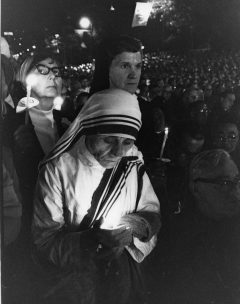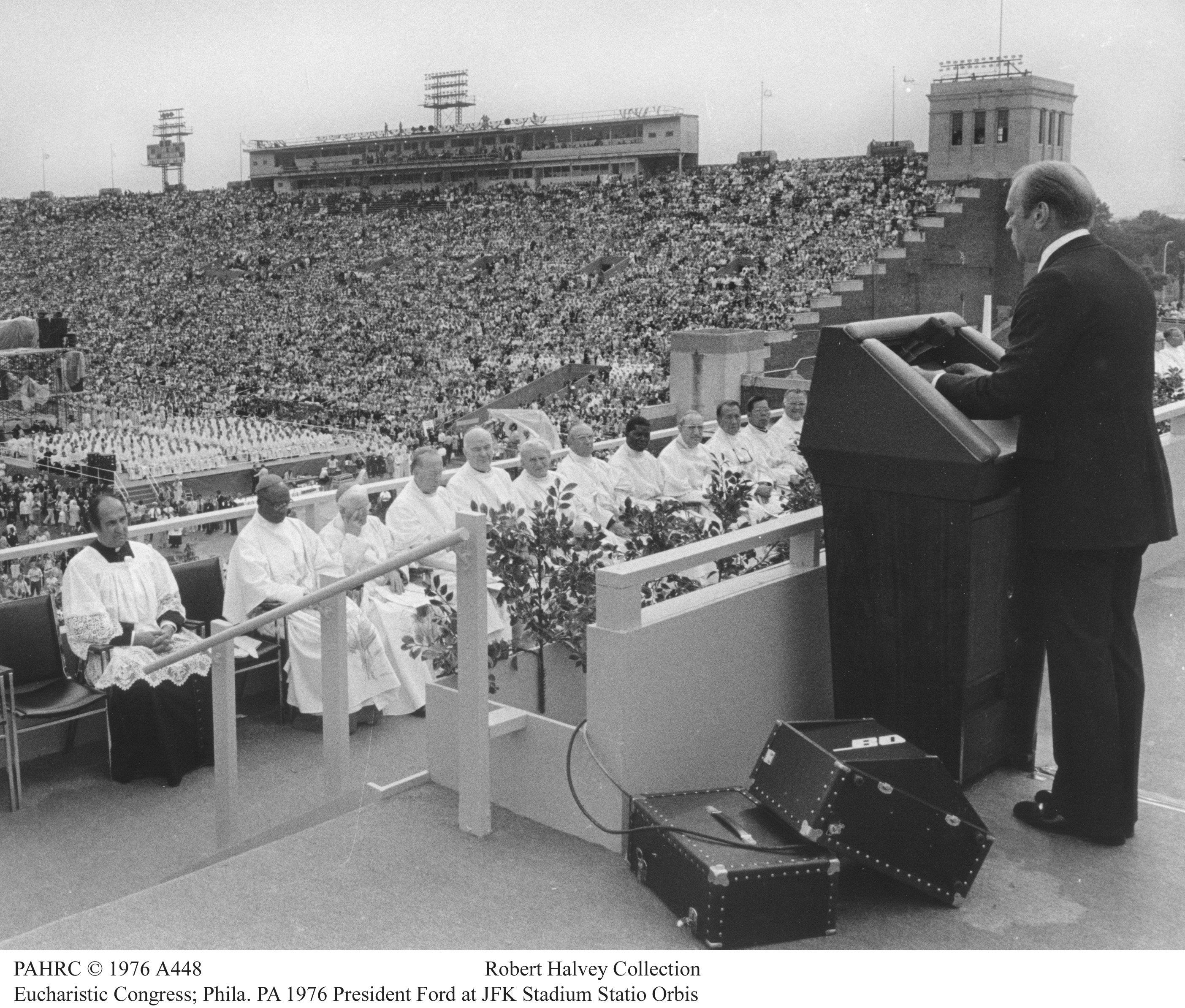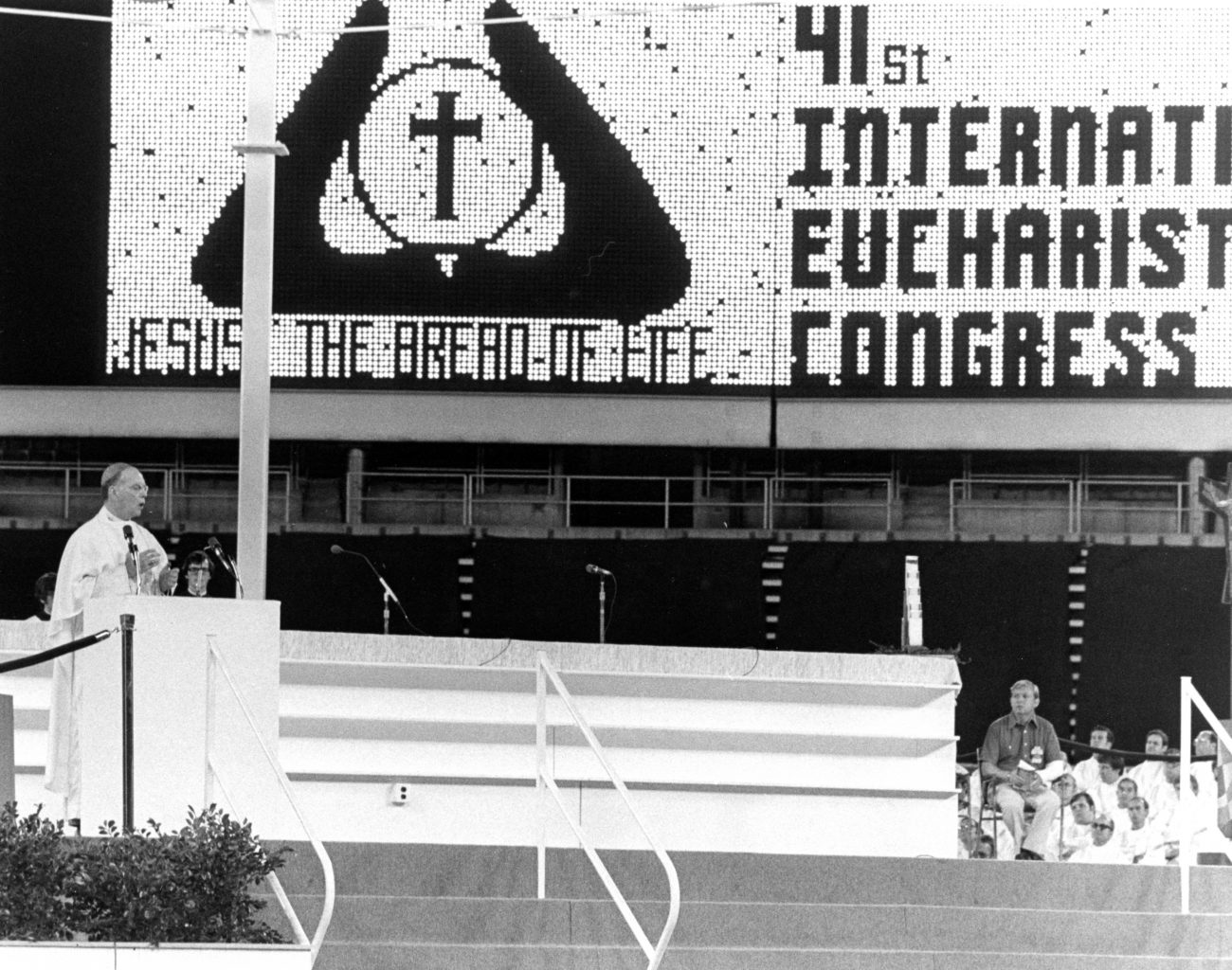It was 1976 Philadelphia was not only at the center of the nation’s Bicentennial celebration, but also the location of the 41st International Eucharistic Congress (IEC). The historic gathering featured speakers including two future saints, possible future saints, and a European princess.
The Catholic Historical Research Center of the Archdiocese of Philadelphia will open a new exhibit this month – called “Gift of Finest Wheat: The Story of the 41st International Eucharistic Congress” – to relive this profound event. With a collection of 100 artifacts on display, the exhibit is set to open on Wednesday, May 29 from 10:00 a.m. – 3:00 p.m. It’s planned to run through October 2025.
All are welcome to visit the center and view the exhibit, which coincides with the National Eucharistic Pilgrimage, which passes through the Archdiocese of Philadelphia May 30 – June 3. It culminates with the 10th National Eucharistic Congress in Indianapolis July 17-21.
“The exhibit looks at the history and planning of how Philadelphia was chosen [to host the event] and details of the week-long event that happened. It covers different Masses, highlights some of the famous people who came, like Mother Teresa, Karol Wojtyła before he was pope, Dorothy Day, and Princess Grace of Monaco,” said Patrick Shank, archivist at the Catholic Historical Research Center.
The exhibit will display sacred objects – ciboria, chalices, and vestments used at the Masses – letters, photographs, and artwork used during the IEC. The collection illustrates the impact the IEC had on the City of Philadelphia and the Catholic Church.
The 41st IEC brought Catholics together from around the world to celebrate and discuss a theme connected to the Eucharist. The theme of the 41st IEC was “The Eucharist and the Hungers of the Human Family” with the goal of examining both physical and spiritual hunger.
The history of the Eucharistic Congress dates to 1881, when a one-day congress was held in Lille, France and attended by more than 800 people. The 1979 event in Philadelphia would last for a week and be attended by over 1.5 million people, including 44 Cardinals and 417 bishops from around the world.

(Catholic Historical Research Center of the Archdiocese of Philadelphia)
During the 41st IEC, Mother Teresa – now Saint Teresa of Calcutta – and Dorothy Day were panelists on a conference about Women and the Eucharist. Both spoke about the role of women in the Catholic Church.
Mother Teresa also spoke about the poor, “and how we don’t know or see the poor,” said Shank, “and the need to have love in our hearts to help the poor.”
The future Pope Saint John Paul II gave the homily at the Mass for Freedom and Justice in Veterans Stadium. In his homily, he spoke of the oppression of Polish Catholics from the Polish Communist Government, and was critical of the Soviet system of government, highlighting the need for religious freedom.
Princess Grace and her husband, Prince Rainier of Monaco, spoke on the role of the family and the importance of forming the family in the Catholic faith.
Archbishop Fulton J. Sheen – known to Americans for his influential work preaching the Gospel on television and radio – was also in attendance at the conference. Cesar Chavez, American labor leader and civil rights activist, was scheduled to attend, but had to cancel due to receiving death threats.
The IEC was even attended by President Gerald Ford, who spoke of the importance of freedom and the Church’s work for peace at the closing Mass before approximately 96,000 people at JFK Stadium.

President Gerald Ford speaks to a crowd of approximately 96,000 people at JFK Stadium during the 41st International Eucharistic Congress in Philadelphia. (Catholic Historical Research Center of the Archdiocese of Philadelphia)
There were even many artistic expressions of faith during the 41st IEC. Art was displayed in the Civic Center, formerly located in West Philadelphia. Theatrical productions of the play “A Man for All Seasons” and the musical “Godspell” were hosted by Philadelphia’s historic churches. There was even a performance of a musical about the Eucharist called “The Miracle of the Bread,” which was performed at Robin Hood Dell West.
The IEC still had some controversy, however. Day, well-known for her social activism, was outspoken about a Mass for the military that was scheduled on the same day as the anniversary of the dropping of the atomic bomb on Hiroshima. Day led the protest by pacifists.
Of the exhibit, Shank says, it’s “a way to highlight and connect one of the historical collections we have here, showing that Eucharistic Congress has been a mainstay in Catholic life, and how the past resonates with today. It’s all interconnected,” said Shank.
***
For more information on the Catholic Historical Research Center of the Archdiocese of Philadelphia, visit here.
PREVIOUS: How to Donate to Nutritional Development Service’s Annual Summer Food Drive
NEXT: In Advance of St. Charles Seminary’s Move to a New Campus, Historic Papal Visit Cross to be Relocated to Malvern Retreat House




Share this story